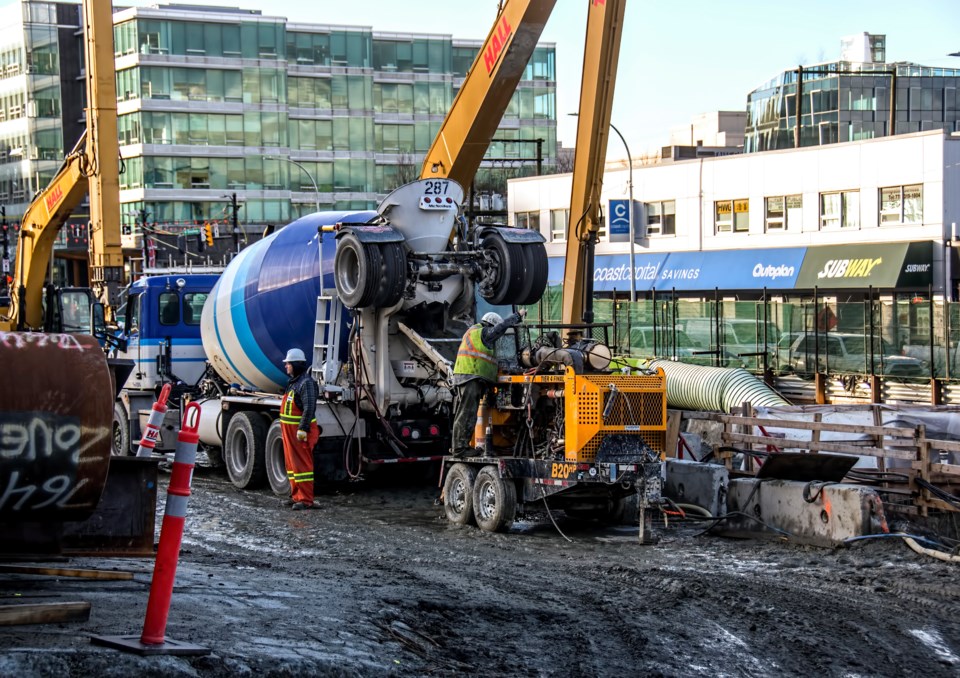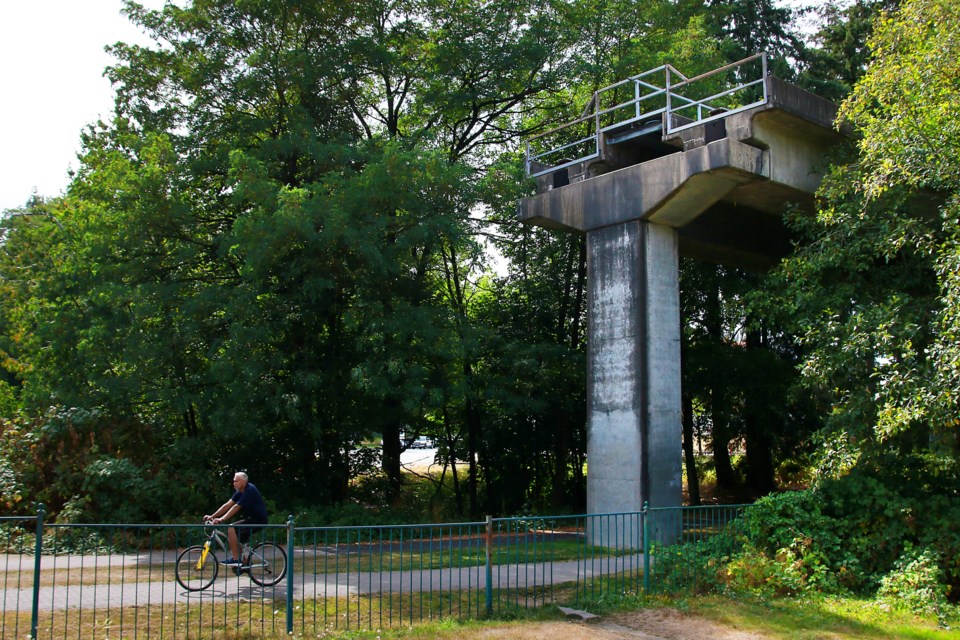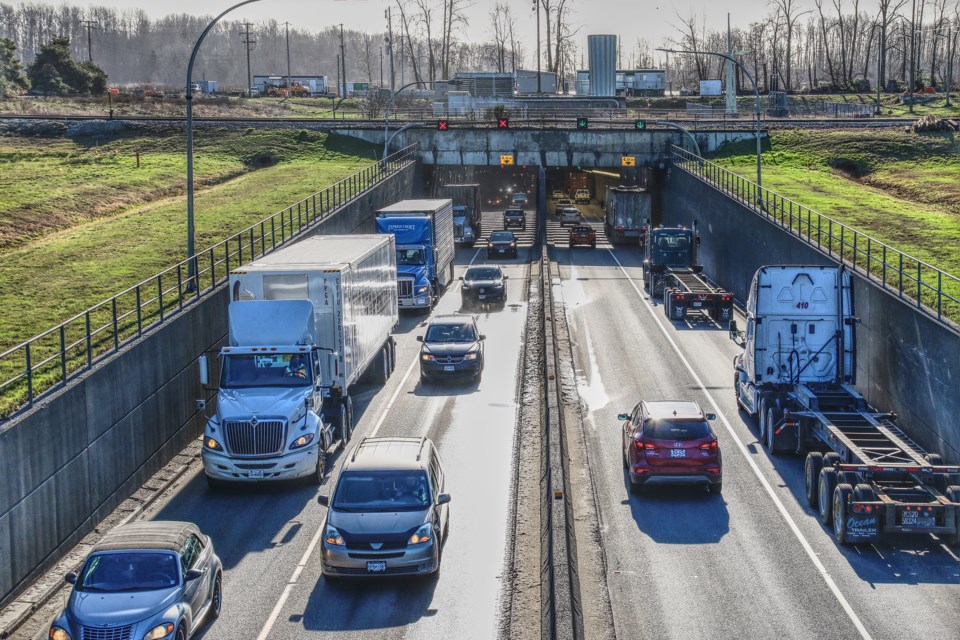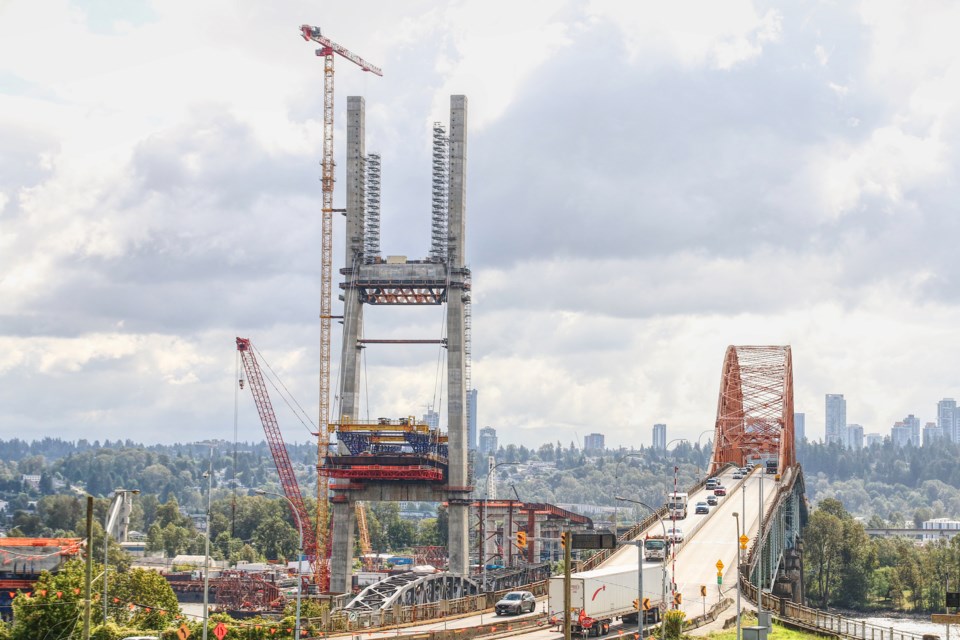Delays, disputes and cost increases have to varying degrees affected the four significant transportation extension or replacement projects underway in the Lower Mainland.
It remains unclear if the billions being invested over years to enable new commuter and trade capacity will be enough to handle rising need in a growing region.
Metro 91原创’s population is estimated to increase to 4.2 million by 2050, growth of 1.4 million people or about 51 per cent from 2021, according to Metro 91原创’s regional planning document.
In short, better, newer infrastructure with more capacity—such as the Broadway Subway line, the Surrey-Langley SkyTrain, and George Massey Tunnel and Pattullo Bridge replacements—is needed to support the region’s anticipated population growth and increased export activity, said Werner Antweiler, an associate professor at the University of British Columbia’s Sauder School of Business who has expertise in transportation issues.
“It involves facilitating people getting to work and having transportation that doesn’t lead to more congestion.”
The Broadway Subway
The $2.8 billion Broadway Subway project—which began construction in 2020, at the height of the COVID-19 pandemic—is a westward extension of the existing Millennium line.
Although delayed by two years and scheduled to open in 2027, the project is currently on budget and reached an important milestone in April with the completion of the boring of the entire tunnel.
Antweiler said he expects the project to run smoothly and on schedule, with the most challenging portion of construction now finished.
The UBC-Broadway corridor, which runs from the institution to Commercial-Broadway, currently generates around $12.2 billion in GDP to Metro 91原创 and accounts for 135,000 jobs, according to a UBC study. This means the subway extension will not only increase transit capacity and transit, but it will address one of the largest high-capacity links in the region’s transit network.

The extension will include six new underground stations and will run up to Arbutus Street. The project has been approved to extend to UBC in a future phase that could cost between $5 billion and $6 billion—a range significantly above the original estimate of $3.8 billion, mainly due to inflation, said Antweiler.
Financial realities at Translink pose a risk to future transport projects, as recent revenue shortfalls could lead the agency to restrict services.
“That’s in part a post-COVID effect. More people are working from home, so the amount of commuting seems to have fallen,” Antweiler said. “If you’re curtailing a network in lower-density areas, it could be problematic, because it has a ripple effect. It could certainly pose significant challenges for building public transit in the region.”
The current phase of the Broadway Subway have resulted in street closures, congestion and changes to traffic patterns have negatively impacted some local businesses.
The Surrey-Langley SkyTrain
Originally planned as light rail, former Surrey mayor Linda Hepner promised the system would be running by 2018 shortly after her election in 2014.
The City of Surrey and TransLink spent a combined $70 million in pre-construction work on the project, which was abandoned when mayor Doug McCallum was elected in 2018.
Formally approved in 2022 and with construction expected to begin in fall 2024, the SkyTrain will include eight new stations and will connect Langley’s city centre with the rest of Metro 91原创’s rapid transit network.
The extension will begin at King George station, which has been the line’s last stop since it opened in 1994.
Like the Broadway Subway, this project, too, has experienced significant delays. In this case, those have also brought massive cost increases.
In December 2023, the cost of the project was estimated to be $3.94 billion. Nine months later, the budget has skyrocketed by 50 per cent to a grand total of $6 billion. The opening has been delayed by a year to 2029.

Both have been met with criticism.
“This $2 billion blowout is an absolute disgrace,” said B.C. Conservative leader John Rustad. “It’s a direct result of this government’s gross incompetence and inability to manage even the most basic aspects of a major infrastructure project.”
However, Antweiler argues that inflation and projected inflation have played a significant role.
“I’m much more comfortable with a realistic assessment, as opposed to taking the lowest number you can possibly come up with,” he said. “As an economist, I look at the benefit-cost calculation; if it’s $6 billion or $8 billion and there’s a benefit of $10 billion or $12 billion in more commerce or housing development, it’s still worth it.”
The George Massey Tunnel
Another controversial infrastructure project at a notorious commuting bottleneck is the replacement of the George Massey Tunnel, a vehicle-only crossing opened in 1959 that no longer meets the region’s needs or seismic standards.
In 2013, former premier Christy Clark announced the tunnel would be replaced by a 10-lane, $3.5 billion bridge. Four years later, the BC NDP scrapped the project and launched a technical review.
After long disputes, environmental assessments for a new $4.15 billion, eight-lane tunnel are in progress, with construction expected to begin in 2026 on a tunnel that would open in 2030.

In July 2024, Cross Fraser Partnership was selected as the preferred proponent to design the new tunnel.
The province is currently deciding what to do with the old structure once the new one is complete. Concerns about the environmental impact of removing the old tunnel from the riverbed have led the province to explore the option of filling it with sand instead.
Building capacity should be the main goal of the project, Antweiler said, adding that while the tunnel-or-bridge dilemma is complex, all things considered, the tunnel might have a slight edge over a bridge. A 10-lane bridge that provides excess capacity might not be the solution, as exposure to the elements and the lifespan of infrastructure must be taken into account.
The Pattullo Bridge
The fourth major transportation project underway in Metro 91原创 is the replacement of the Pattullo Bridge—a headache for commuters between New Westminster and Surrey due to heavy congestion and narrow lanes.
Opened in 1937, the design of the 87-year-old bridge has raised safety concerns for those traversing it.
The $1.4 billion replacement was approved in 2018 and construction began in 2020. The project was delayed by two years and is expected to open in the fall of 2025.
A new four-lane bridge will offer a centre safety median barrier, wider lanes, and cyclist and pedestrian walkways. Construction reached a significant milestone in May, with the completion of the new bridge’s main tower.
“It’s been a bottleneck for everyone who’s ever taken the bridge, and we all know how prone it is to accidents,” said Antweiler. “It’s been a piece of very vulnerable infrastructure, not only for the maintenance issues, but also for the way it’s designed. It’s not the safest of all bridges.”
There’s a lot of room for improvement, and the new state-of-the-art design will be a welcome addition for the next 50 to 60 years, he said.
“In governments, if they do one thing well, and they should all be doing well, it should be building infrastructure.”
-With files from Glen Korstrom
